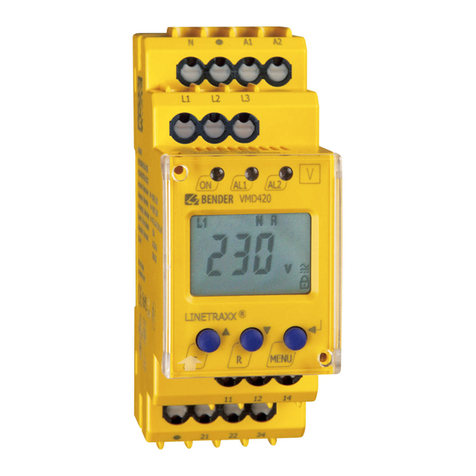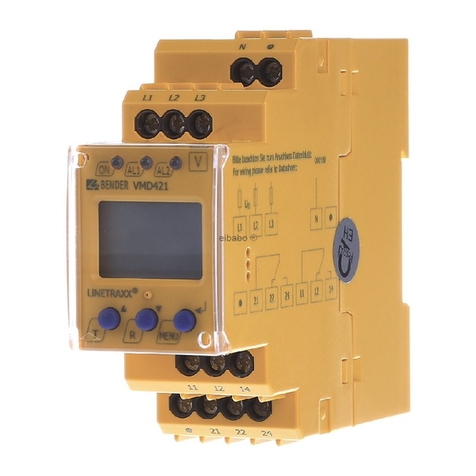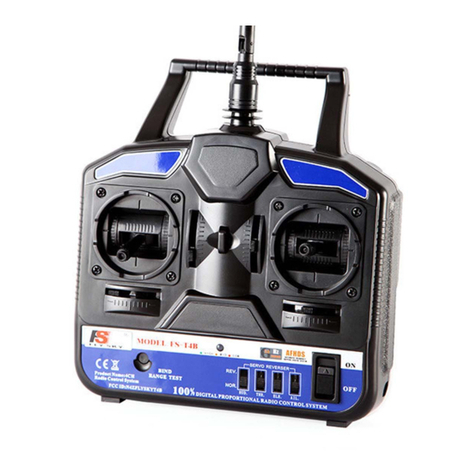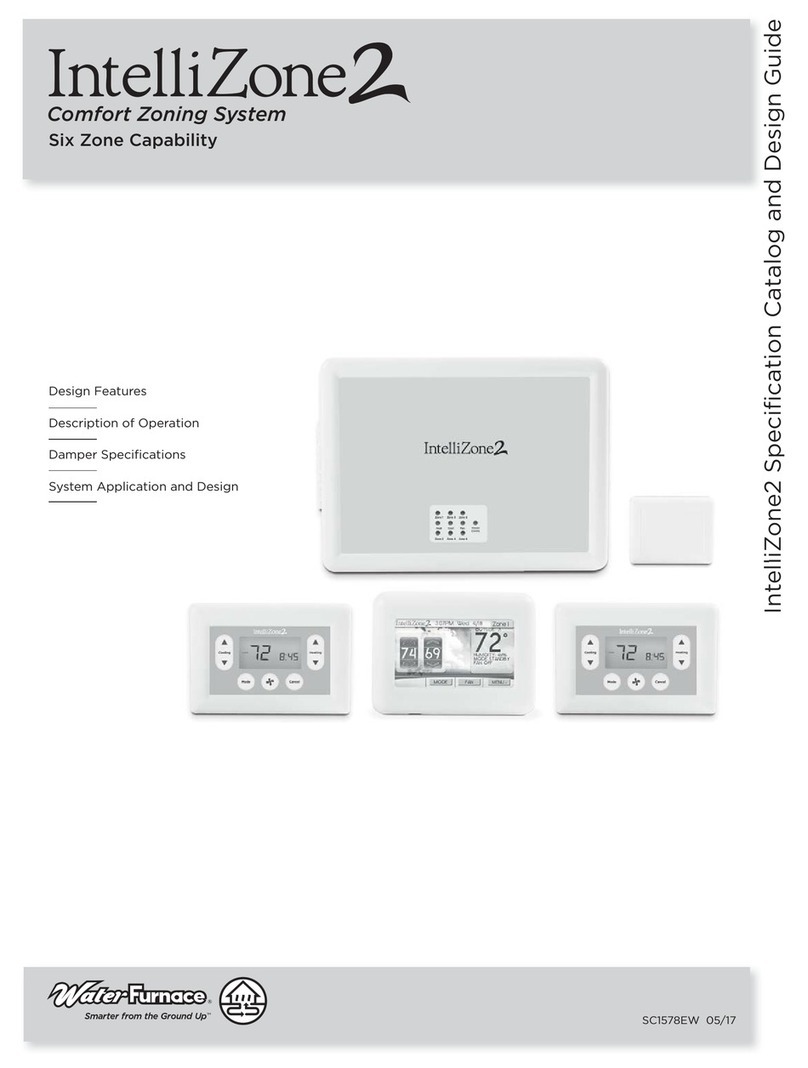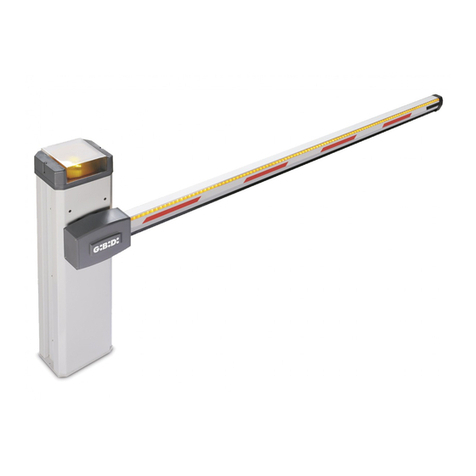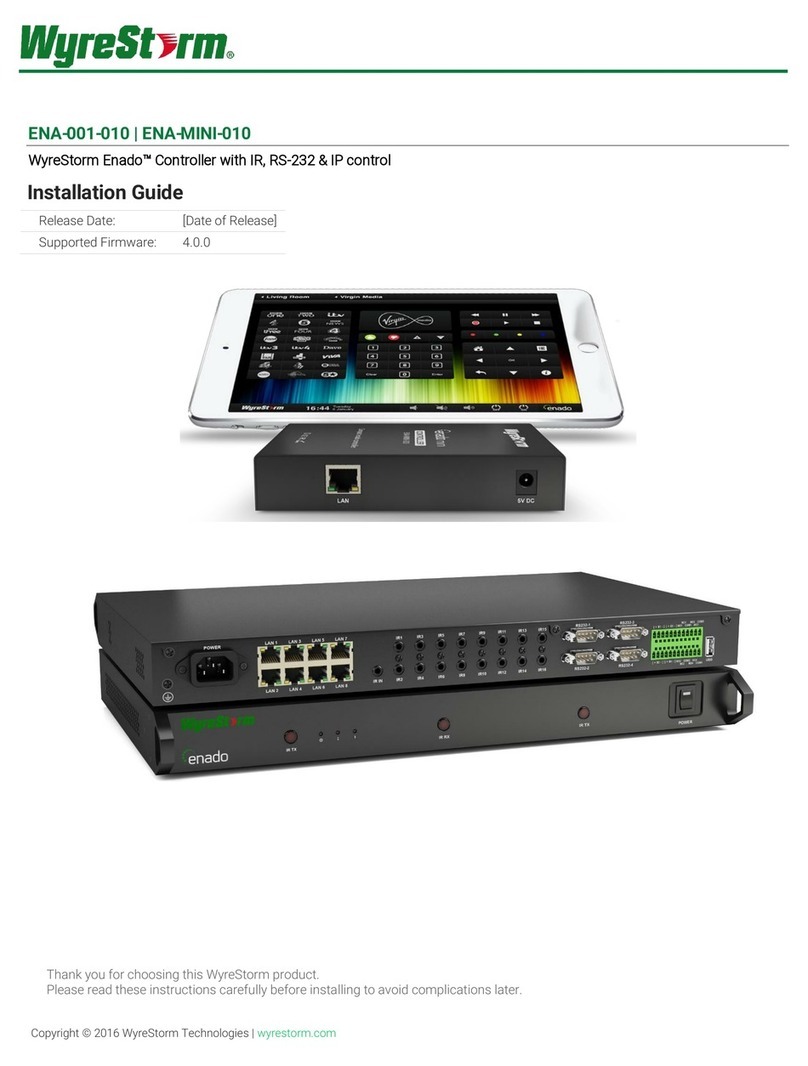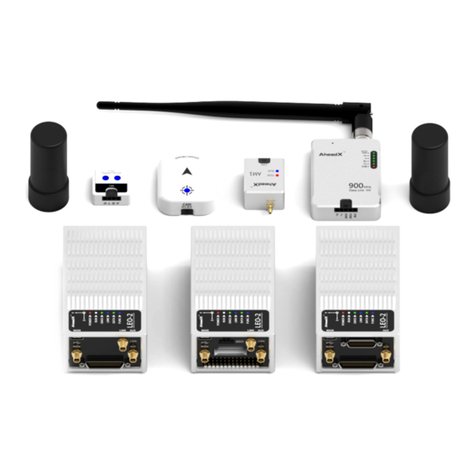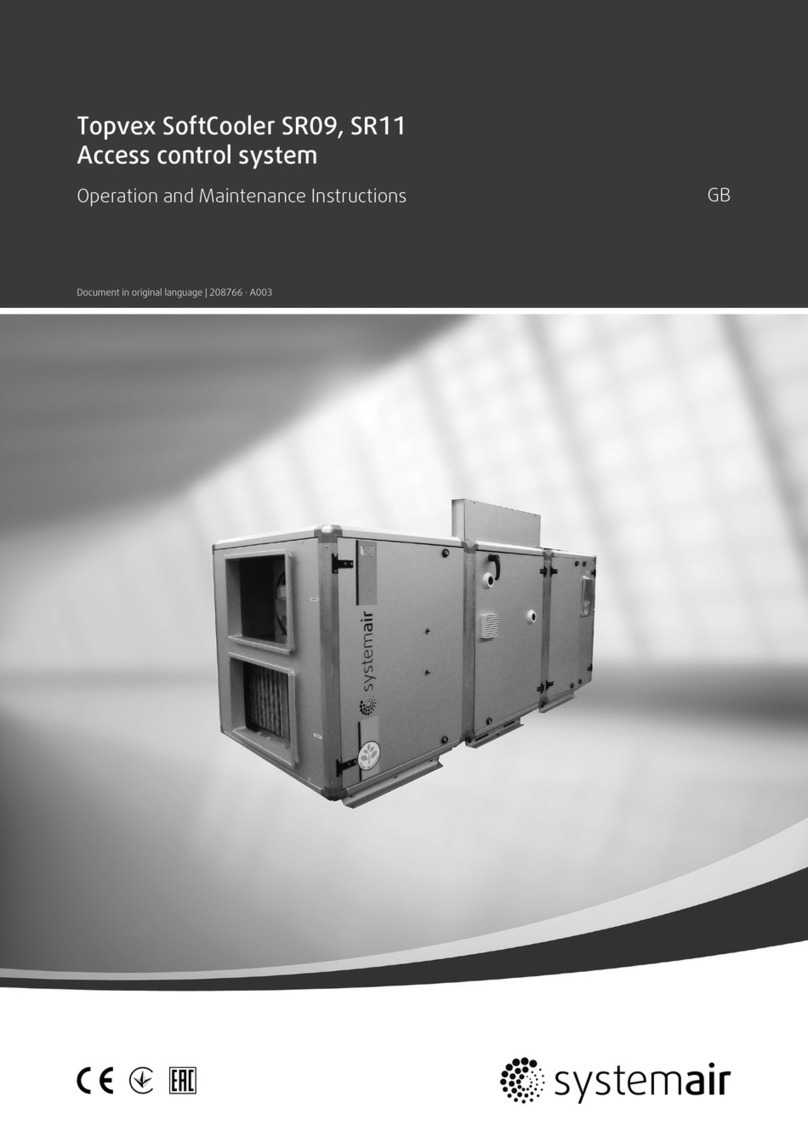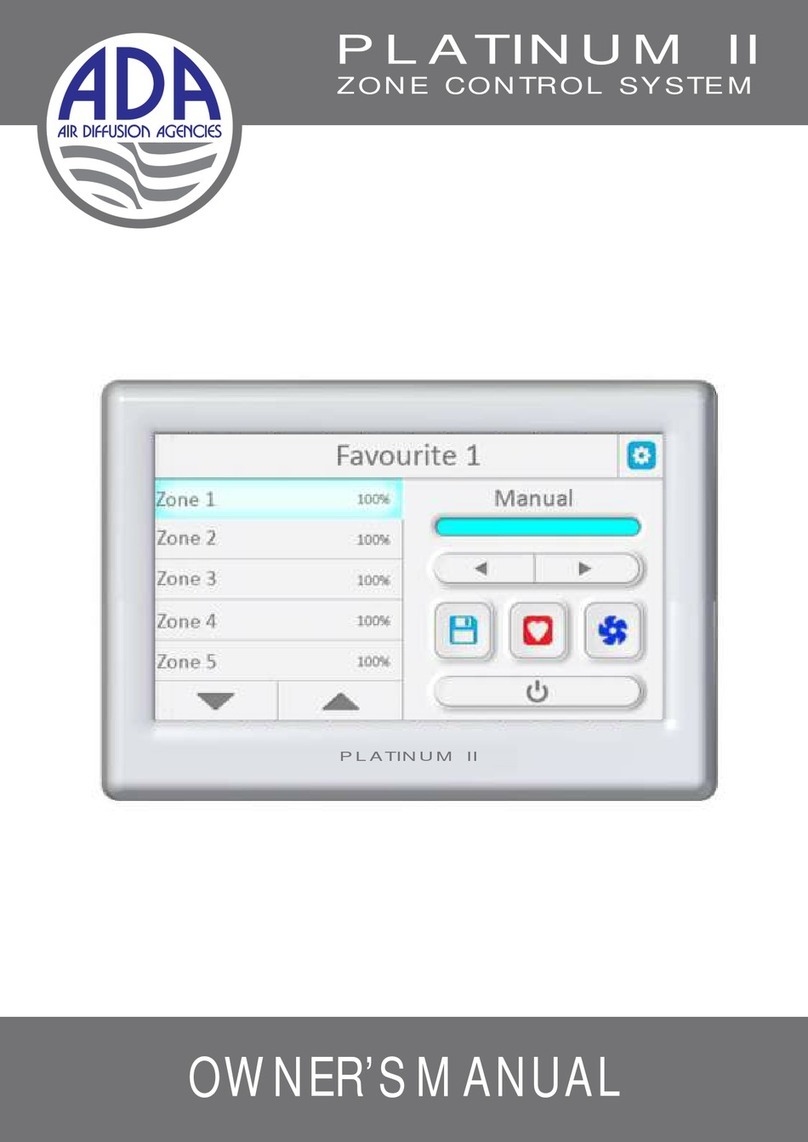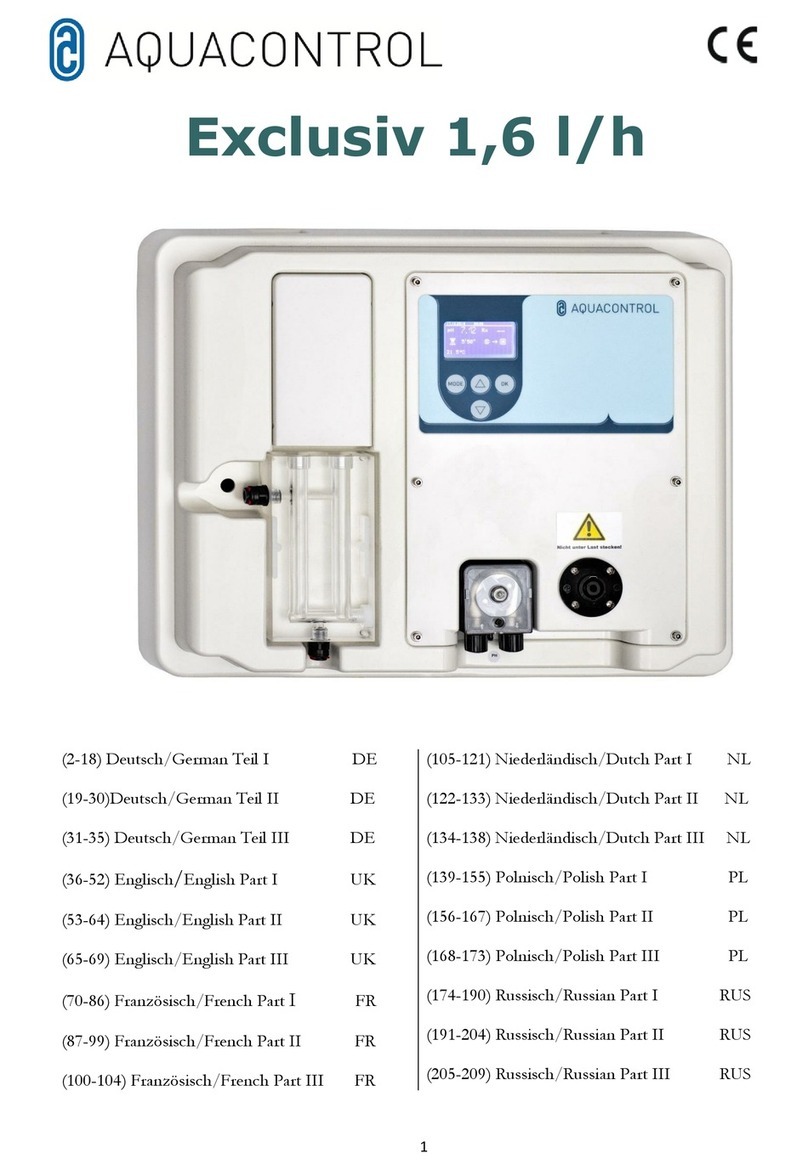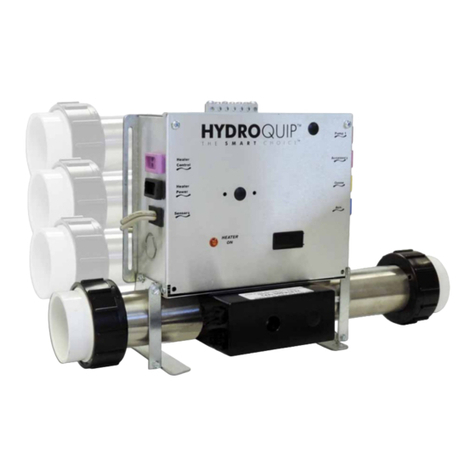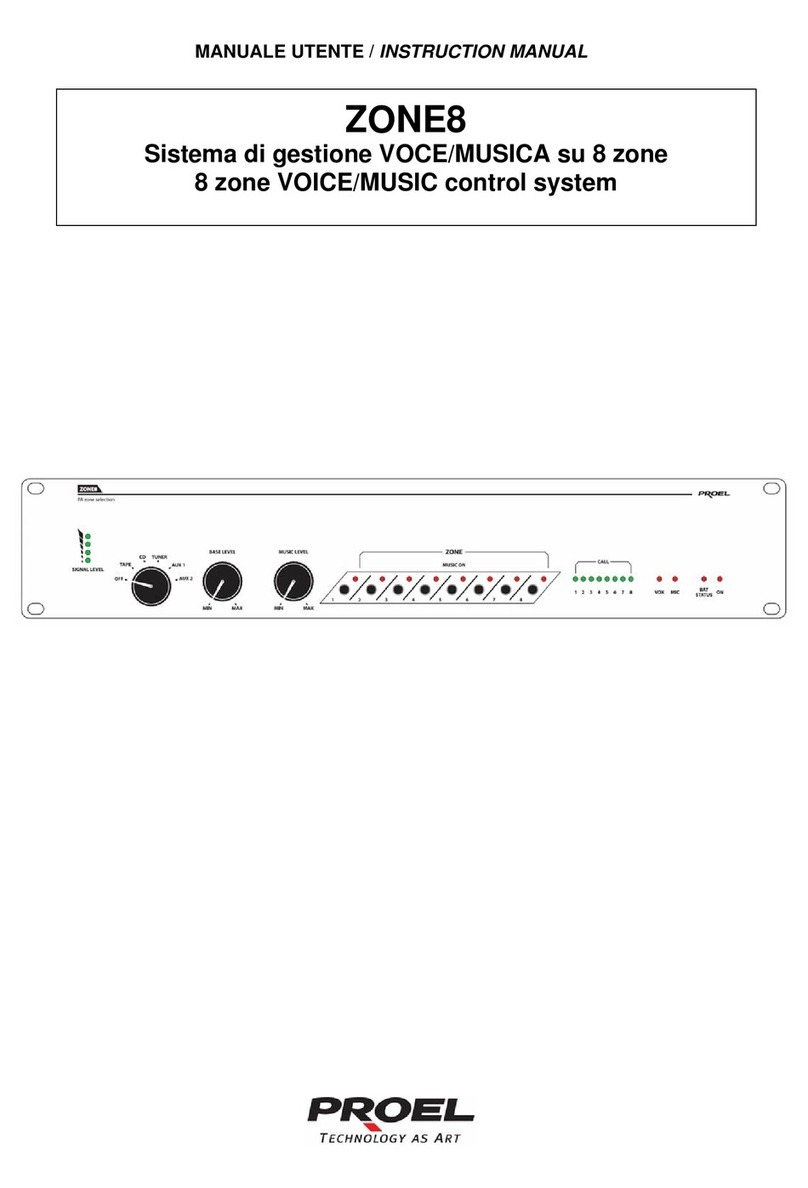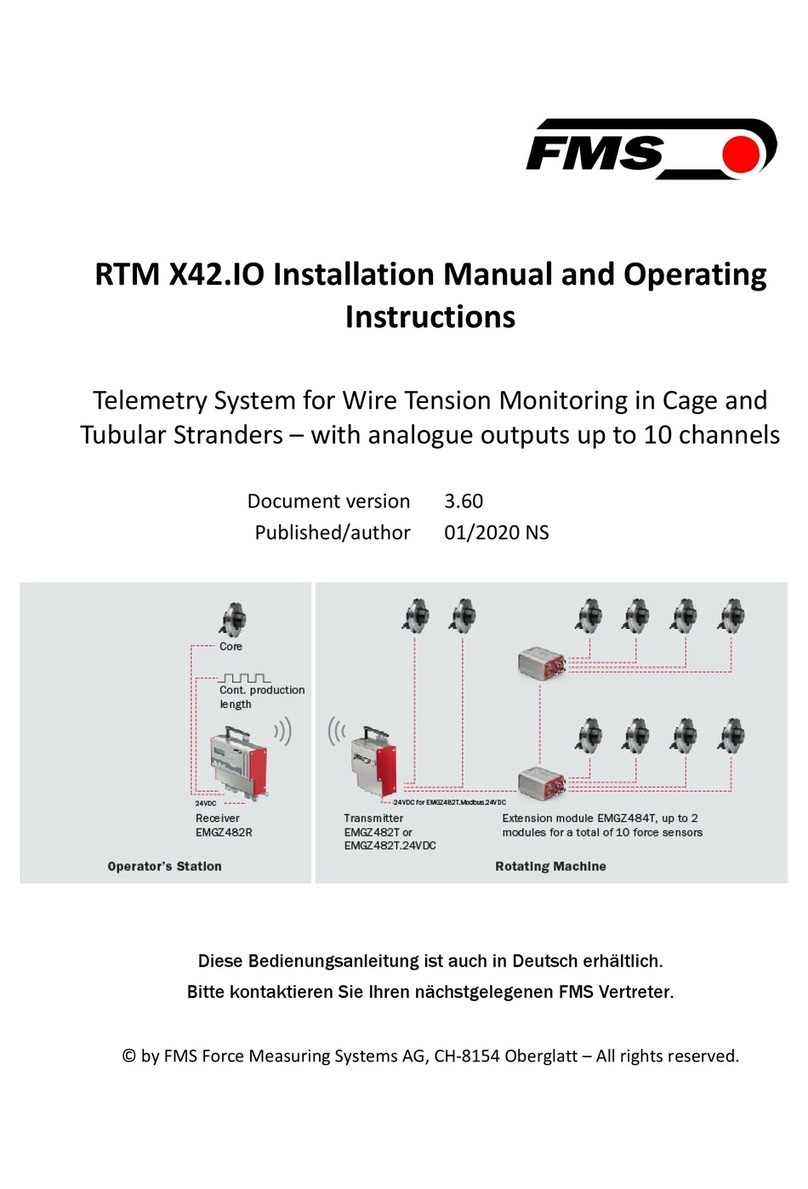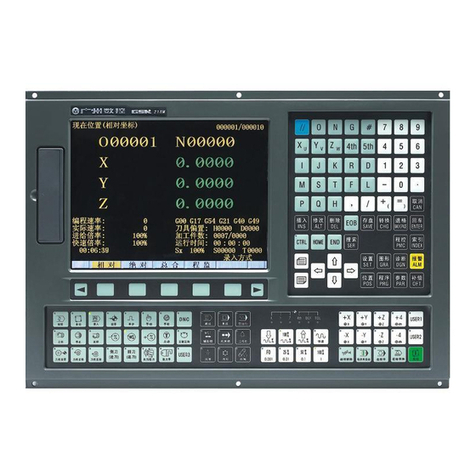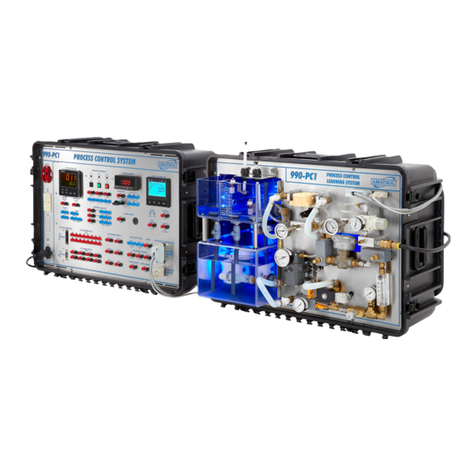Bender NGRM500 User manual

NGRM500 (HRG)
NGRM550 (LRG)
Neutral Grounding Resistor Monitor
NGRM5xx_D00373_06_M_XXEN/02.2022 Manual EN

Bender GmbH & Co. KG
Londorfer Str. 65 • 35305 Grünberg • Germany
PO Box 1161 • 35301 Grünberg • Germany
Tel.: +49 6401 807-0 • Fax: +49 6401 807-259
E-Mail: info@bender.de • www.bender.de
©Bender GmbH & Co. KG
All rights reserved.
Reprinting only with permission of the publisher.
Subject to change!
Photos: Bender archive

3
Table of Contents
NGRM5xx_D00373_06_M_XXEN/02.2022
1. Important information ........................................................................... 7
1.1 How to use this manual ................................................................................... 7
1.2 Technical support: service and support .................................................... 8
1.2.1 First level support .......................................................................................... 8
1.2.2 Repair service .................................................................................................. 8
1.2.3 Field service ..................................................................................................... 8
1.3 Training courses ................................................................................................. 9
1.4 Delivery conditions ........................................................................................... 9
1.5 Inspection, transport and storage ............................................................... 9
1.6 Warranty and liability ....................................................................................... 9
1.7 Disposal ............................................................................................................... 10
2. Safety instructions ............................................................................... 11
2.1 General safety instructions .......................................................................... 11
2.2 Work activities on electrical installations ................................................ 11
2.3 Intended use ..................................................................................................... 11
2.4 Glossary ............................................................................................................... 12
3. Function ................................................................................................. 13
3.1 Device features ................................................................................................. 13
3.2 Functional description ................................................................................... 14
3.3 NGRM500: Recommended minimum value RNGR
(tripping level 50 %) ....................................................................................... 15
3.3.1 Recommended RNGR for system voltage Usys ≤ 4300 V
(HRG system) ................................................................................................ 15
3.3.2 Recommended RNGR for system voltage Usys > 4300 V
(HRG system) ................................................................................................ 16

Table of Contents
4NGRM5xx_D00373_06_M_XXEN/02.2022
4. Mounting ............................................................................................... 17
4.1 Dimension diagram NGRM5… .................................................................. 17
4.2 Enclosure view .................................................................................................. 18
4.3 Screw mounting ............................................................................................... 19
4.4 DIN rail mounting ............................................................................................ 20
5. Connection ............................................................................................. 21
5.1 Connection requirements ............................................................................ 21
5.2 Connection descriptions of CD-series coupling device ..................... 22
5.3 Recommended connecting cable coupling device CD… ................ 22
5.4 Star connection ................................................................................................ 23
5.4.1 Connection .................................................................................................... 23
5.4.2 Connection with pulser ............................................................................. 24
5.4.3 Artificial neutral (delta connection) ...................................................... 25
5.5 CT connection ................................................................................................... 26
5.6 Connection of relays
(ground-fault, NGR-fault and trip relay) .................................................. 27
5.7 Connection to the X1 interface .................................................................. 27
5.7.1 X1: Input I1…3 .............................................................................................. 28
5.7.2 X1: Output Q1…2 ........................................................................................ 29
5.7.3 X1: Analogue output .................................................................................. 30
6. User interface ......................................................................................... 31
6.1 Operating elements ........................................................................................ 31
6.2 Standard display .............................................................................................. 33
6.3 Fault indication (active) ................................................................................. 33
6.4 Fault indication (inactive) ............................................................................. 34
6.5 Acknowledging a fault message ................................................................ 34
6.6 History memory ................................................................................................ 35

Table of Contents
5
NGRM5xx_D00373_06_M_XXEN/02.2022
7. Menu ....................................................................................................... 36
7.1 Overview ............................................................................................................. 36
7.2 Navigating through the menu ................................................................... 37
7.3 Changing settings ........................................................................................... 37
7.4 Data measured values (menu 1) ................................................................ 38
7.5 Harmonics (menu 2) ....................................................................................... 39
7.6 History (menu 3) .............................................................................................. 39
7.7 Pulser (menu 4) ................................................................................................ 40
7.8 Display (menu 5) .............................................................................................. 40
7.9 HRG/LRG settings (menu 6) ......................................................................... 41
7.9.1 HRG system (menu 6.1) ............................................................................. 41
7.9.2 CT (menu 6.2) ................................................................................................ 41
7.9.3 NGR (menu 6.3) ............................................................................................ 42
7.9.4 Response values (menu 6.4) .................................................................... 42
7.9.5 System settings (menu 6.5) ...................................................................... 46
7.9.6 Field calibration (menu 6.6) ..................................................................... 47
7.10 Device settings (menu 7) .............................................................................. 48
7.11 Commissioning (menu 8) ............................................................................. 52
7.12 Info (menu 9) ..................................................................................................... 53
7.13 Alarm (menu 10) .............................................................................................. 53
8. Initial commissioning .......................................................................... 54
8.1 Response values ............................................................................................... 54
8.2 Output relays operating modes ................................................................. 55
8.2.1 Field calibration ........................................................................................... 55
8.2.2 Trip times ........................................................................................................ 56
8.3 RMS trip signal, fundamental, harmonics ............................................... 58
8.4 Initial measurement ....................................................................................... 58

Table of Contents
6NGRM5xx_D00373_06_M_XXEN/02.2022
9. Analogue and digital I/O configuration ........................................... 60
9.1 Analogue output (menu 6.6.4) ................................................................... 60
9.2 Digital outputs (Q1, Q2) ................................................................................ 60
9.2.1 Use of Q1: Device health ........................................................................... 61
9.2.2 Use of Q2: Pulser ......................................................................................... 61
9.3 Digital inputs ..................................................................................................... 61
10. Test cycle .............................................................................................. 62
11. Factory settings ................................................................................... 63
12. Error codes ........................................................................................... 65
13. Technical data ..................................................................................... 66
13.1 Tabular data ....................................................................................................... 66
13.2 Standards, approvals, certifications .......................................................... 71
13.3 Ordering details ............................................................................................... 71
13.3.1 NGR monitor .................................................................................................. 71
13.3.2 Accessories ..................................................................................................... 71
13.4 Document revision history ........................................................................... 72

Important information
7
NGRM5xx_D00373_06_M_XXEN/02.2022
1. Important information
1.1 How to use this manual
Always keep this manual within easy reach for future reference. To make it easier
for you to understand and revisit certain sections in this manual, we have used symbols
to identify important instructions and information. The meaning of these symbols is ex-
plained below:
This manual is intended for qualified personnel working in electrical
engineering and electronics!
This signal word indicates that there is a high risk of danger that will
result in death or serious injury if not avoided.
This signal word indicates a medium risk of danger that can lead to
death or serious injury, if not avoided.
This signal word indicates a low-level risk that can result in minor or
moderate injury or damage to property if not avoided.
This symbol denotes information intended to assist the user in making
optimum use of the product.
DANGER
WARNING
CAUTION

Important information
8NGRM5xx_D00373_06_M_XXEN/02.2022
1.2 Technical support: service and support
For commissioning and troubleshooting Bender offers:
1.2.1 First level support
Technical support by phone or e-mail for all Bender products
Questions about specific customer applications
Commissioning
Troubleshooting
Telephone: +49 6401 807-760*
Fax: +49 6401 807-259
In Germany only: 0700BenderHelp (Tel. and Fax)
E-mail: [email protected]
1.2.2 Repair service
Repair, calibration, update and replacement service for Bender products
Repair, calibration, testing and analysis of Bender products
Hardware and software update for Bender devices
Delivery of replacement devices for faulty or incorrectly delivered Bender devices
Extended warranty for Bender devices with in-house repair service or replacement
devices at no extra cost
Telephone: +49 6401 807-780** (technical issues)
+49 6401 807-784**, -785** (commercial issues)
Fax: +49 6401 807-789
E-mail: [email protected]
Please send the devices for repair to the following address:
Bender GmbH, Repair-Service,
Londorfer Straße 65,
35305 Grünberg
1.2.3 Field service
On-site service for all Bender products
Commissioning, parameter setting, maintenance, troubleshooting for Bender prod-
ucts
Analysis of the electrical installation in the building (power quality test, EMC test, ther-
mography)
Practical training courses for customers

Important information
9
NGRM5xx_D00373_06_M_XXEN/02.2022
Telephone: +49 6401 807-752**, -762 **(technical issues)
+49 6401 807-753** (commercial issues)
Fax: +49 6401 807-759
E-mail: [email protected]
Internet: www.bender.de
*Available from 7.00 a.m. to 8.00 p.m. on 365 days of the year (CET/UTC+1)
**Mo-Thu 7.00 a.m. - 8.00 p.m., Fr 7.00 a.m. - 13.00 p.m
1.3 Training courses
Bender is happy to provide training regarding the use of test equipment.
The dates of training courses and workshops can be found on the Internet at www.bend-
er.de > Know-how > Seminars.
1.4 Delivery conditions
The conditions of sale and delivery set out by Bender apply.
For software products, the "Softwareklausel zur Überlassung von Standard- Software
als Teil von Lieferungen, Ergänzung und Änderung der Allgemeinen Lieferbedingun-
gen für Erzeugnisse und Leistungen der Elektroindustrie" (software clause in respect of
the licensing of standard software as part of deliveries, modifications and changes to
general delivery conditions for products and services in the electrical industry) set out
by the ZVEI (Zentralverband Elektrotechnik- und Elektronikindustrie e.V., (German Elec-
trical and Electronic Manufacturers' Association) also applies.
Conditions of sale and delivery can be obtained from Bender in printed or electronic for-
mat.
1.5 Inspection, transport and storage
Inspect the dispatch and equipment packaging for damage, and compare the contents
of the package with the delivery documents. In the event of damage in transit, please
contact Bender immediately.
The devices must only be stored in areas where it is protected from dust, humidity and
spray or dripping water, and in which the specified storage temperatures can be as-
sured.
1.6 Warranty and liability
Warranty and liability claims in the event of injury to persons or damage to property are
excluded if they can be attributed to one or more of the following causes:
Improper use of the device.
Incorrect mounting, commissioning, operation and maintenance of the device.

Important information
10 NGRM5xx_D00373_06_M_XXEN/02.2022
Failure to observe the instructions in this operating manual regarding transport, com-
missioning, operation and maintenance of the device.
Unauthorised changes to the device made by parties other than the manufacturer.
Non-observance of technical data.
Repairs carried out incorrectly and the use of replacement parts or accessories not
approved by the manufacturer.
Catastrophes caused by external influences and force majeure.
Mounting and installation with device combinations not recommended by the manu-
facturer.
This operating manual, especially the safety instructions, must be observed by all per-
sonnel working on the device. Furthermore, the rules and regulations that apply for ac-
cident prevention at the place of use must be observed.
1.7 Disposal
Abide by the national regulations and laws governing the disposal of this device. Ask
your supplier if you are not sure how to dispose of the old equipment.
The directive on waste electrical and electronic equipment (WEEE directive) and the di-
rective on the restriction of certain hazardous substances in electrical and electronic
equipment (RoHS directive) apply in the European Community. In Germany, these pol-
icies are implemented through the "Electrical and Electronic Equipment Act" (ElektroG).
According to this, the following applies:
Electric and electronic equipment are not to be included in household waste.
Batteries and accumulators are not to be included in household waste but must be
disposed of in accordance with the regulations.
Old electrical and electronic equipment from users other than private households
which was introduced to the market after 13th August 2005 must be taken back by
the manufacturer and disposed of properly.
For more information on the disposal of Bender devices, refer to our homepage at
www.bender.de -> Service & support.

Safety instructions
11
NGRM5xx_D00373_06_M_XXEN/02.2022
2. Safety instructions
2.1 General safety instructions
Part of the device documentation in addition to this manual is the enclosed "Safety in-
structions for Bender products".
2.2 Work activities on electrical installations
If the device is used outside the Federal Republic of Germany, the applicable local
standards and regulations must be complied with. The European standard EN 50110
can be used as a guide.
2.3 Intended use
The NGRM500 is only intended for use in high-resistance grounded systems. The
NGRM550 is only intended for use in low-resistance grounded systems. In these sys-
tems, the NGRM5… monitors
the current through the neutral grounding resistor (NGR),
the voltage between the star point of the transformer and ground (voltage drop
across the NGR),
the condition of the neutral grounding resistor (NGR).
Only qualified personnel are permitted to carry out the work necessary to
install, commission and run a device or system.
Risk of electrocution due to electric shock!
Touching live parts of the system carries the risk of:
An electric shock
Damage to the electrical installation
Destruction of the device
Before installing and connecting the device, make sure that the
installation has been de-energized. Observe the rules for working on
electrical installations.
DANGER

Safety instructions
12 NGRM5xx_D00373_06_M_XXEN/02.2022
In order to meet the requirements of applicable standards, customised parameter set-
tings must be made on the equipment in order to adapt it to local equipment and op-
erating conditions.
Any other use than that described in this manual is regarded as improper. Intended use
includes following all the instructions in this manual.
2.4 Glossary
CD Coupling Device CD-series
CT Current Transformer
FFT Fast Fourier Transformation
HRG High Resistance Grounding
INGR NGR rated current
INGR nom Nominal current through the NGR
LRG Low Resistance Grounding
NER Neutral Earthing Resistor (NER = NGR)
NGR Neutral Grounding Resistor
NTP Network Time Protocol
PT Potential Transformer
RNGR NGR resistance value
RNGR nom NGR nominal resistance
RS Sense resistor; CD-series coupling device
PLC Programmable Logic Controller
UNGR Voltage on the NGR
UNGR nom Nominal voltage across the NGR
Usys System voltage
UTC Universal Time Coordinated
Systems with a resistance-grounded star point can be used when an
interruption of the power supply would involve excessive costs due
to production stoppage (e.g. automotive production, chemical
industry). The ground fault that occurs between a phase and ground does
not lead to a failure of the power supply in these systems. A ground fault
must be detected and eliminated as quickly as possible, since the
occurrence of another ground fault in a second phase would lead to a
tripping of the overcurrent protective device.

Function
13
NGRM5xx_D00373_06_M_XXEN/02.2022
3. Function
3.1 Device features
Determination of RNGR with passive and active measurement methods
Continuous monitoring of the RNGR even if the installation is de-energized;
Alarm or trip on ground fault
Monitoring of the current INGR
Monitoring of the voltage UNGR
Ethernet communication
Web server
Language selection (German, English GB and US, Spanish, French)
Test button (internal, external) with/without tripping
FFT analysis of neutral current and voltage
Pulser control for manual ground fault location
Relay outputs for detection of ground faults and resistor faults
Relay output for shutdown of the installation after a configurable time
Can be combined with RCMS… for automatic shutdown of feeders
Graphical user interface
Wide supply voltage range for operating the NGR monitor
Range of use up to 2000 m AMSL
Fault/History memory
Analogue output of measured values
(0…10 V, 4…20 mA, etc., selectable parameters)
Password protection
Tripping on RMS, fundamental component signal or harmonics
Detection of AC and DC ground faults

Function
14 NGRM5xx_D00373_06_M_XXEN/02.2022
3.2 Functional description
NGRM5… monitors NGR resistance RNGR, neutral voltage UNGR and current INGR. NGR re-
sistance is monitored using an active and a passive procedure:
active The device generates an active test pulse and measures RNGR even
if the installation is de-energized.
passive The resistance RNGR is determined when INGR or UNGR exceeds an
internal threshold. The device measures the existing current and
voltage and calculates RNGR.
In the case of the "auto" method, monitoring switches automatically between "active"
and "passive" when the measured current or voltage value exceeds or falls below the
internal threshold. The threshold is 15 % of the nominal value and can be adjusted by
Bender if required.
A shorted or open NGR is reliably detected in an energized as well as a de-energized in-
stallation with the active measurement method.
When the "passive" method is selected, no switching of the monitoring takes place. The
NGR is not monitored if the installation is shut down or the current and voltage are too
low.
The measurement method can be selected as a set point or via the configurable digital
input I1 if the NGR method "external" has been selected (for software versions from July
2021).
The NGR-fault relay switches from the operating state (selectable as fail-safe or non-fail-
safe) to the alarm state when the measured resistance RNGR is outside of the configured
thresholds.
A ground fault is signalled via the corresponding ground-fault relay and the "GROUND
FAULT" LED when INGR or UNGR exceeds the selectable thresholds. After the adjustable
time delay has elapsed, the trip relay operates. After the ground fault has been eliminat-
ed, the installation can be restarted either automatically or manually, depending on the
configuration.
A connection to installations ranging from 400 V…25 kV is possible via the appropriate
CD-series coupling device.
INGR is measured with measuring current transformers with a 5 A or 50 mA secondary
rating.

Function
15
NGRM5xx_D00373_06_M_XXEN/02.2022
3.3 NGRM500: Recommended minimum value RNGR
(tripping level 50 %)
Temperature range –40…+60 °C, field calibration at 20 °C
() = Limited temperature range at any field calibration temperature ±20 K
The temperatures must be within the limits of the operating temperature range of –
40…+60 °C.
3.3.1 Recommended RNGR for system voltage Usys ≤ 4300 V
(HRG system)
Tab. 3.1: Recommended RNGR for system voltage Usys ≤ 4300 V (HRG system)
CD1000/CD1000-2 CD1000-2 CD5000
Usys 400 V 600 V 690 V 1000 V 2400 V 4200 V
INGR
1 A 231 346 398 577 1386 —
5 A 46 69 80 115 277 485
10 A (23 Ω) 35 40 58 139 242
15 A (15 Ω) (23 Ω) (27 Ω) 38 92 162
20 A —(17 Ω) (20 Ω) 29 69 121
25 A ——(16 Ω) (23 Ω) 55 97
30 A ———(19 Ω) (46 Ω) 81
40 A ————(35 Ω) 61
50 A ————(28 Ω) (48 Ω)
100 A ———— —(24 Ω)

Function
16 NGRM5xx_D00373_06_M_XXEN/02.2022
3.3.2 Recommended RNGR for system voltage Usys > 4300 V
(HRG system)
Tab. 3.2: Recommended RNGR for system voltage Usys > 4300 V (HRG system)
CD14400 CD25000
Usys 6000 V 6600 V 7200 V 11000 V 14400 V 25000 V
INGR
1 A ——————
5 A 693 762 831 1270 1663 —
10 A 346 381 416 635 831 1443
15 A 231 254 277 423 554 962
20 A (173 Ω) 191 208 318 416 722
25 A (139 Ω) (152 Ω) (166 Ω) 254 333 577
30 A (115 Ω) (127 Ω) (139 Ω) 212 277 481
40 A (87 Ω) (95 Ω) (104 Ω) (159 Ω) 208 361
50 A —(76 Ω) (83 Ω) (127 Ω) (166 Ω) 289
100 A ————(83 Ω) (144 Ω)

Mounting
17
NGRM5xx_D00373_06_M_XXEN/02.2022
4. Mounting
4.1 Dimension diagram NGRM5…
Fig. 4.1: Dimension diagram NGRM5…; All dimensions in mm (in)
Only qualified personnel are permitted to carry out the work necessary to
install, commission and run a device or system.
Risk of electrocution due to electric shock!
Touching live parts of the system carries the risk of:
An electric shock
Damage to the electrical installation
Destruction of the device
Before installing and connecting the device, make sure that the
installation has been de-energized. Observe the rules for working on
electrical installations.
DANGER
108 (4.25) 110 (4.33)
93
(3.66)

Mounting
18 NGRM5xx_D00373_06_M_XXEN/02.2022
4.2 Enclosure view
Fig. 4.2: Enclosure view: top, front, bottom
SERVICE
TRIPPED
NGR FAULT
GROUND FAULT
ON MENU
RESET
DATAINFO
TEST
NGR Monitor
OK
NGR = 265Ω
I NGR = 0,01A
NGRM500
LINETRAXX®ΩAV
11 12 14 21 22 24 31 32 34
Ground fault NGR fault Trip
NGRM500
C5ERSRETHX1 50m
Top
Front
Bottom

Mounting
19
NGRM5xx_D00373_06_M_XXEN/02.2022
4.3 Screw mounting
1. Fix the three mounting clips delivered with the device (two of them packed
separately) manually or using a tool, as illustrated below.
2. Drill the mounting holes for the M4 thread according to the drilling template.
3. Fix the NGRM5… with three M4 or #10 screws.
Dimensions in mm (in)
108 (4.25)
107,3 (4.22)
100 (3.94)
72 (2.83)
54 (2.12)
1 x Click!
Ø M4
54 (2.12)
72 (2.83)
100 (3.94)

Mounting
20 NGRM5xx_D00373_06_M_XXEN/02.2022
4.4 DIN rail mounting
1. Fix the three mounting clips delivered with the device (two of them packed
separately) manually or using a tool, as illustrated below.
2. Snap the NGRM5… on the DIN rail.
3. Fix the NGRM5… to the DIN rail by pushing the mounting clips until they click
into place.
2 x Click!
1.
2.
3.
Other manuals for NGRM500
5
This manual suits for next models
1
Table of contents
Other Bender Control System manuals
